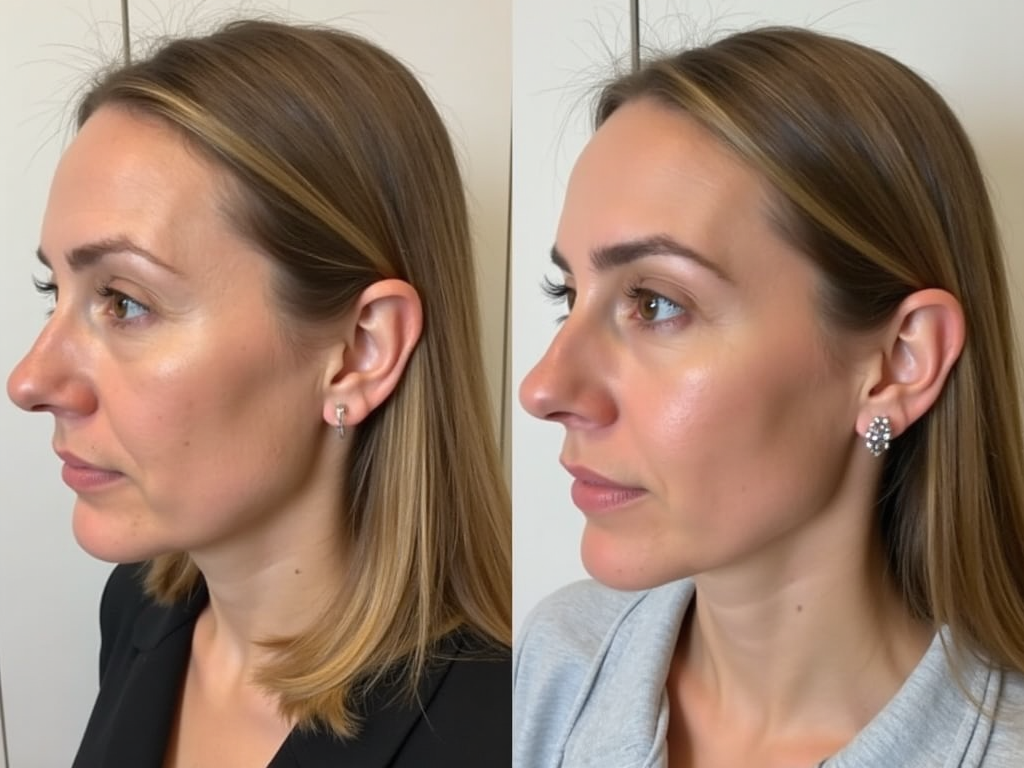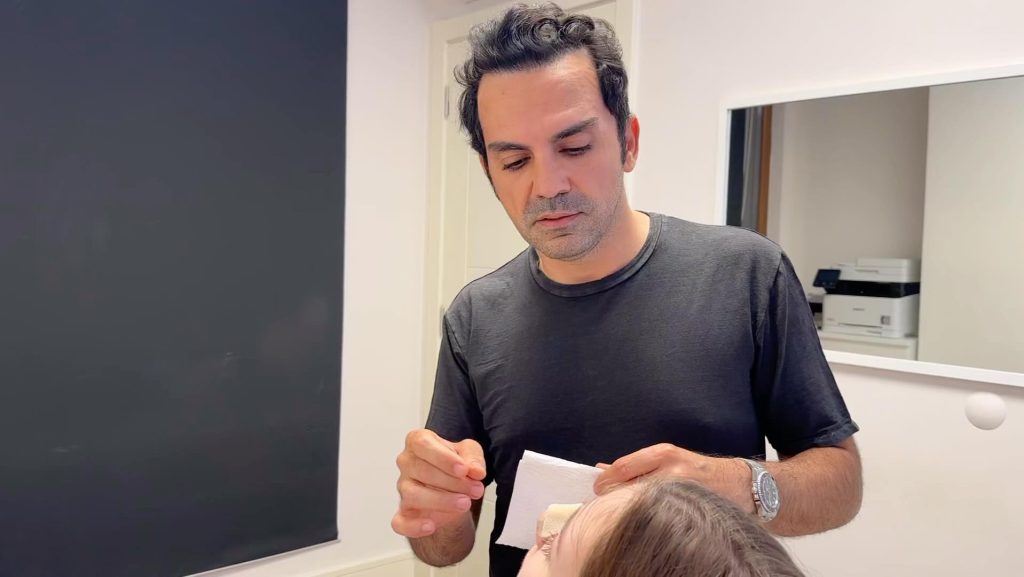
Rhinoplasty Recovery: Tips for a Speedy Healing
Introduction to Rhinoplasty Recovery
Rhinoplasty, often referred to as a nose job, is a transformative procedure that can greatly enhance your appearance and boost your confidence. However, the journey doesn’t end once the surgery is complete. Proper recovery is crucial to ensuring the best results. By understanding what to expect and taking the right steps, you can help your body heal efficiently and minimize any discomfort along the way.
What to Expect After Your Rhinoplasty Procedure
After rhinoplasty, your body will need time to adjust and heal from the surgical alterations. You can expect swelling, bruising, and some level of discomfort for the first few days. There may also be nasal congestion and a feeling of tightness around the nose. It’s important to remember that these are normal parts of the recovery process and will gradually improve over time.
The Importance of Following Post-Operative Instructions for Optimal Healing
Your surgeon will provide you with detailed post-operative instructions, and it is vital to follow them closely. These guidelines are designed to support your healing and prevent complications. Whether it’s taking medications as prescribed, avoiding certain activities, or attending follow-up appointments, adhering to these instructions will set the stage for a smooth recovery and optimal results.
The Stages of Rhinoplasty Recovery
The First 24 Hours: What Happens Right After Surgery
The first 24 hours after your rhinoplasty are the most crucial. You will likely feel groggy from the anesthesia, and your nose will be bandaged or splinted. It’s best to have a trusted friend or family member by your side to assist you, as you’ll need to rest and avoid any strenuous activity.
The First Week: Managing Swelling and Discomfort
During the first week, swelling and bruising around the eyes and nose will be at their peak. Cold compresses can help reduce swelling, and your surgeon may prescribe pain medication to ease discomfort. Keeping your head elevated, even while sleeping, can also help minimize swelling.
Weeks 2 to 4: Seeing the First Signs of Progress
By the second week, you’ll begin to notice a reduction in bruising and swelling. Most patients feel well enough to return to work or resume light activities by this point. The nasal area may still feel tender, but you will start to see the initial shape of your new nose emerge.
Long-Term Healing: What to Expect in the Months Ahead
Long-term healing can take several months, with subtle changes continuing for up to a year or more. During this time, the final shape of your nose will gradually take form as the swelling dissipates completely. It’s important to be patient and trust the healing process, as the most refined results take time to fully appear.

Managing Swelling and Bruising
Why Swelling and Bruising Occur After Rhinoplasty
Swelling and bruising are common after rhinoplasty due to the manipulation of bone and cartilage during surgery. The tissues around the nose react to the trauma by retaining fluid, which causes swelling, and broken capillaries can lead to bruising, especially around the eyes.
Tips for Reducing Swelling in the First Few Days
To reduce swelling, keep your head elevated at all times, even while sleeping. Apply cold compresses gently to the area around your nose and eyes, but avoid direct pressure on the nose itself. Staying hydrated and avoiding salty foods can also help keep swelling in check.
How Long Does Bruising Last and When Will It Fade?
Bruising typically peaks within the first two to three days after surgery and then gradually fades over the course of one to two weeks. By the end of the second week, most of the visible bruising should be gone, although minor discoloration may persist for a bit longer.
Keeping Comfortable During Recovery
Best Sleeping Positions to Aid Rhinoplasty Recovery
Sleeping with your head elevated is crucial during the first few weeks of recovery. Use extra pillows or a wedge pillow to keep your head above your heart, which helps reduce swelling. Avoid sleeping on your side, as this can put pressure on your nose and affect the healing process.
How to Manage Pain Without Overdoing Medications
Pain is a natural part of the recovery process, but it can be managed effectively without relying solely on medications. In addition to taking prescribed painkillers, consider using over-the-counter options like acetaminophen, but avoid aspirin and ibuprofen, as they can increase bleeding. Relaxation techniques, such as deep breathing and gentle meditation, can also help alleviate discomfort.
Choosing the Right Clothing to Stay Comfortable and Avoid Irritation
Opt for loose-fitting clothing that doesn’t need to be pulled over your head. Button-up shirts or zip-up hoodies are ideal, as they allow you to dress and undress without disturbing your nose or causing unnecessary discomfort.
Foods and Drinks That Promote Healing
The Best Foods to Support a Speedy Recovery
Nourishing your body with the right foods can help speed up your recovery. Focus on a diet rich in vitamins and minerals, particularly those that promote healing, such as vitamin C, zinc, and protein. Fresh fruits, vegetables, lean meats, and leafy greens are all excellent choices for supporting your body as it heals.
Foods to Avoid During Rhinoplasty Healing
Certain foods can hinder your recovery, particularly those high in sodium, which can lead to increased swelling. Spicy foods should also be avoided, as they can irritate the nasal passages. Stick to bland, easily digestible meals during the first few days to avoid any unnecessary discomfort.
Staying Hydrated: The Role of Water in Your Recovery Journey
Hydration is key to a speedy recovery. Drinking plenty of water helps flush out toxins, reduce swelling, and keep your skin hydrated, which is essential for proper healing. Aim for at least eight glasses of water per day, and avoid caffeinated or alcoholic beverages, which can dehydrate you.
Avoiding Activities That Could Hamper Your Healing
Physical Activities to Avoid After Rhinoplasty
Strenuous activities, such as running, weightlifting, or any form of high-impact exercise, should be avoided for at least four to six weeks post-surgery. These activities can increase blood pressure, leading to increased swelling or even bleeding, which can compromise your results.
Why You Should Avoid Blowing Your Nose
Blowing your nose can cause significant disruption to the healing tissues inside your nose. For the first few weeks, it’s essential to avoid this action to prevent any damage to the surgical site. If you experience congestion, use saline sprays as recommended by your surgeon to help clear your nasal passages safely.
Protecting Your Nose from Accidental Bumps and Hits
Your nose will be delicate in the weeks following surgery, so it’s important to protect it from any accidental bumps or hits. Be mindful in crowded places, avoid contact sports, and be cautious around pets or young children who might unintentionally knock into your nose.
Caring for Your Nose After Surgery
Proper Cleaning Techniques for Your Nose During Recovery
Cleaning your nose properly is crucial to prevent infection and ensure optimal healing. Use a saline spray as directed by your surgeon to keep your nasal passages moist and free of debris. Avoid using cotton swabs or inserting anything into your nose, as this can cause irritation or damage.
How to Handle Nasal Congestion Without Compromising Healing
Nasal congestion is a common issue after rhinoplasty, but it’s important to manage it without compromising your healing. Saline sprays can help loosen mucus, and steam inhalation may also provide relief. Avoid over-the-counter decongestants unless specifically approved by your surgeon.
Dealing with Stitches and Nasal Splints: What to Expect
Stitches and nasal splints are typically used to support your nose during the initial healing phase. Stitches may dissolve on their own, or your surgeon may remove them during a follow-up appointment. Nasal splints are usually removed within the first week, and your surgeon will provide guidance on how to care for your nose once they are gone.
Tips for Minimizing Scarring
The Role of Incision Care in Reducing Scarring
Proper incision care is essential for minimizing scarring after rhinoplasty. Keep the incision area clean and follow your surgeon’s instructions regarding any ointments or dressings. Avoid touching or picking at the incision, as this can lead to increased scarring or infection.
How to Protect Your Skin from Sun Exposure After Rhinoplasty
Sun exposure can darken scars and prolong the healing process, so it’s important to protect your skin after rhinoplasty. Avoid direct sunlight, wear a wide-brimmed hat when outdoors, and apply a high-SPF sunscreen once your surgeon gives the go-ahead. Protecting your skin will help ensure that any scars fade as much as possible over time.
Using Scar Creams and Other Products to Support Healing
Once your surgeon approves, you can use scar creams or silicone gel sheets to help minimize the appearance of scars. These products can support the healing process and reduce the visibility of any incisions. Be sure to follow your surgeon’s recommendations for the best products to use.
Understanding and Managing Emotional Ups and Downs
Feeling Anxious or Impatient? How to Handle Recovery Emotions
It’s normal to feel a mix of emotions during your rhinoplasty recovery. You might feel anxious about the outcome or impatient with the healing process. Practice mindfulness, stay connected with supportive friends or family, and remind yourself that recovery takes time. Keeping a positive outlook can make a significant difference in how you experience the healing journey.
Tips for Staying Positive During the Healing Process
To stay positive, focus on the small milestones you achieve each day. Celebrate reductions in swelling, the ability to return to light activities, or simply feeling more comfortable. Keeping a recovery journal can also help you track your progress and stay motivated throughout the process.
How to Set Realistic Expectations for Your Recovery Timeline
Setting realistic expectations is key to avoiding disappointment. Understand that rhinoplasty results take time, and your final outcome may not be visible for several months. Trust the process, and remember that the gradual changes you see are all part of achieving a beautifully refined result.
When to Contact Your Surgeon
Signs of Complications: What to Watch Out For
While complications are rare, it’s important to know what signs to watch for. Excessive bleeding, severe pain that doesn’t improve

